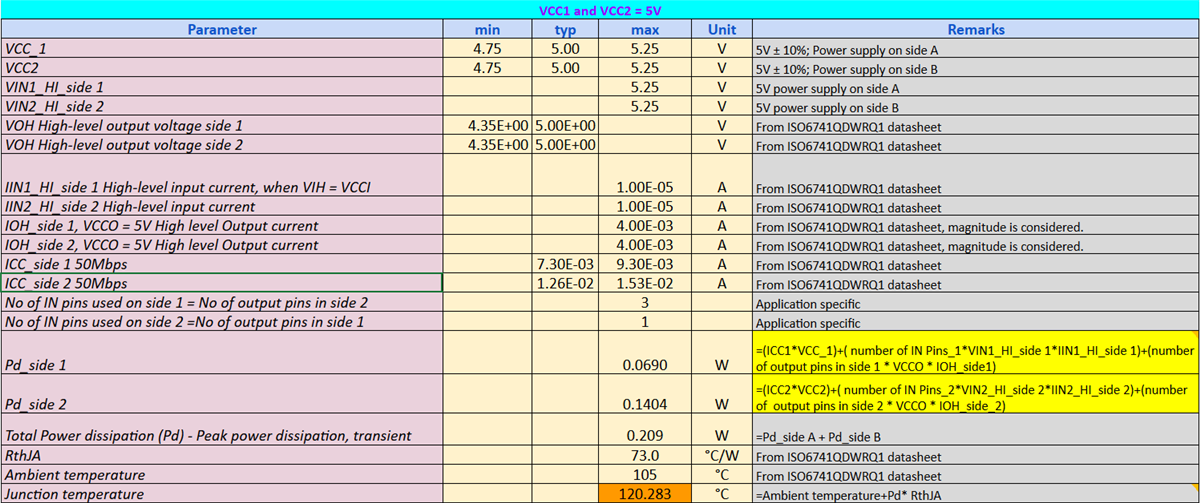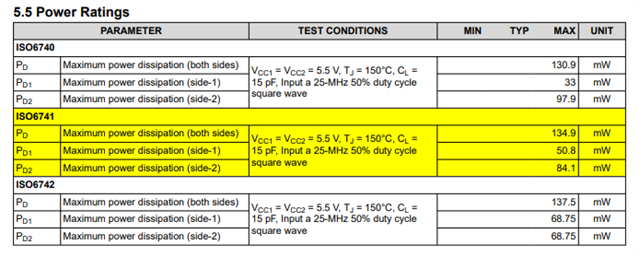Tool/software:
Dear TI team,
1) Please check the power dissipation calculation for ISO6741QDWRQ1 IC as shown below. The calculated value (209mW) exceeds the datasheet maximum power dissipation value_both sides (134.6mW). If the calculated value is wrong, please provide the right method for calculating the total power dissipation and the junction temperature.
2)




